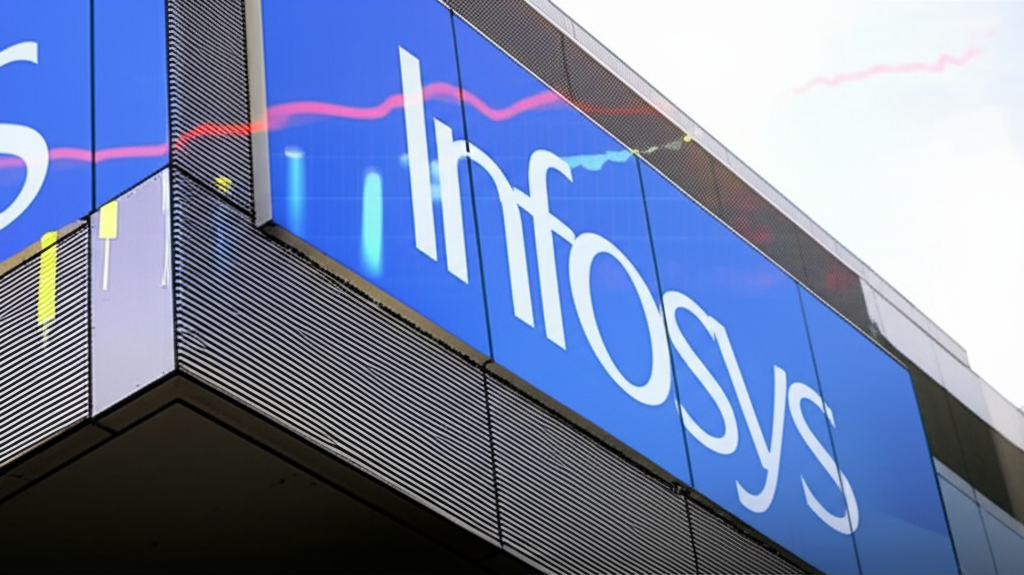IndusInd Bank, one of India’s leading private sector banks, faced a sharp decline in its stock price on April 22, 2025, following reports of a second forensic audit into its financial operations. The bank’s shares plummeted by as much as 6.3%, trading at an intraday low of ₹775.40 on the National Stock Exchange (NSE), after news surfaced that Ernst & Young (EY) was appointed to investigate a ₹600 crore discrepancy in the bank’s microfinance portfolio. This audit, focusing on accrued interest income, adds to an ongoing probe by Grant Thornton Bharat (GTB) into irregularities in the bank’s forex derivatives portfolio. The dual audits have raised fresh concerns about governance, transparency, and accounting practices at IndusInd, already under scrutiny for earlier discrepancies estimated to impact its net worth by ₹1,979 crore. This article examines the reasons behind the stock’s decline, the details of the audits, investor sentiment, and the broader implications for IndusInd Bank and the Indian banking sector.
The Stock Market Reaction
On April 22, 2025, IndusInd Bank’s shares opened 4.2% lower at ₹793.45 on the Bombay Stock Exchange (BSE) and fell further to ₹775.40, marking a 6.3% intraday drop. By 10:45 AM, the stock had pared some losses but was still trading 3.4% lower at ₹799, underperforming the Nifty 50, which gained 0.4%. The decline snapped a five-session rally during which the stock had risen 22%, reflecting a sharp reversal in investor sentiment. The sell-off erased approximately ₹2,700 crore from the bank’s market capitalisation, which stood at ₹61,735 crore post-drop.
The trigger for the decline was a report by The Economic Times, which revealed that IndusInd’s board had engaged EY to conduct a forensic audit into a ₹600 crore discrepancy in its microfinance portfolio. This news, coupled with the ongoing GTB investigation into forex derivatives, amplified investor concerns about potential governance lapses and financial misstatements. Posts on X captured the market’s unease, with users like @broccoli_tech noting, “IndusInd Bank tanks 6.3% as a second forensic audit is triggered over a ₹600 Cr microfinance mismatch. EY stepping in signals deeper governance concerns.”
Details of the Microfinance Discrepancy
The ₹600 crore discrepancy pertains to the accrual of interest income in IndusInd Bank’s microfinance portfolio, which stood at ₹32,564 crore as of Q3 FY25. Microfinance loans, typically small, collateral-free loans to low-income borrowers, account for approximately 9% of the bank’s total loan book of ₹3.66 lakh crore. The issue was flagged during the statutory audit for the financial year ended March 2025, prompting auditors to issue a notification under Section 143(12) of the Companies Act, 2013, which mandates reporting of suspected fraud.
According to sources cited by CNBC-TV18, the discrepancy likely occurred in the second and third quarters of FY25 (July–December 2024) and does not span multiple years. EY’s mandate includes investigating potential operational lapses, identifying instances of fraud, and establishing accountability. The bank has reportedly begun making provisions, utilising ₹1,325 crore in contingent provisions as of Q3 FY25, down from ₹1,525 crore in the previous quarter, to mitigate the financial impact.
However, IndusInd Bank issued a clarification, stating that it had not formally engaged EY for a forensic audit. Instead, its Internal Audit Department (IAD) was reviewing the microfinance business to address concerns raised during the audit process. This statement, reported by CNBC-TV18, created some ambiguity, but the market’s reaction suggests investors remained wary of the underlying issues.
The Ongoing Forex Derivatives Probe
The microfinance audit is not an isolated issue. IndusInd Bank is already grappling with a forensic audit by Grant Thornton Bharat, initiated after discrepancies were identified in its forex derivatives portfolio. On March 10, 2025, the bank disclosed accounting irregularities in its derivatives book, estimating a post-tax impact of 2.35% on its net worth, equivalent to ₹1,500–2,000 crore. A subsequent review by PricewaterhouseCoopers (Pwc) on April 15, 2025, revised the potential loss to ₹1,979 crore, or 2.27% of the bank’s net worth as of December 2024.
The derivatives issue, spanning 5–7 years until March 31, 2024, stemmed from a mismatch in accounting practices. The bank’s internal derivative contracts were valued using swap cost accounting, while external hedges were marked to market, leading to discrepancies in income recognition. This inflated reported net interest income while suppressing trading losses, which surfaced when trades were unwound. The Reserve Bank of India (RBI) was aware of these issues before approving a one-year extension for CEO Sumant Kathpalia in March 2025, raising questions about leadership and governance.
Governance and Leadership Concerns
The dual audits have intensified scrutiny of IndusInd Bank’s governance and internal controls. The bank has faced multiple challenges in recent years, including a 2021 technical glitch at its microfinance subsidiary, Bharat Financial Inclusion Limited (BFIL), which led to 84,000 loans being disbursed without customer consent. In January 2025, CFO Gobind Jain resigned just before Q3 earnings, and the RBI’s decision to extend Kathpalia’s tenure for only one year, instead of the requested three, fueled speculation about regulatory discomfort with the bank’s management.
Analysts, such as those at Elara Capital, have questioned how such lapses went undetected despite concurrent audits and raised concerns about the sanctity of the bank’s book value. “This poses a series of questions on lapses in terms of processes and governance,” Elara noted, highlighting the need for clarity on accountability and potential further challenges. Posts on X echoed these sentiments.
Despite these concerns, Ashok Hinduja, Chairman of IndusInd International Holdings, downplayed the derivatives issue as “normal” and “routine,” assuring promoter support and emphasising the bank’s financial strength, with an operating profit of ₹11,000 crore in the first nine months of FY25.
Financial Performance and Microfinance Stress
IndusInd Bank’s recent financial performance provides context for the market’s reaction. In Q3 FY25 (October–December 2024), the bank reported a 39% year-on-year (YoY) decline in net profit to ₹1,402 crore, down from ₹2,301 crore in Q3 FY24, driven by higher provisions and stress in the microfinance segment. Provisions rose 80% YoY to ₹1,743 crore, with ₹695 crore in fresh slippages from microfinance loans. The gross non-performing asset (GNPA) ratio increased to 2.25% from 1.92%, and the net NPA ratio rose to 0.68% from 0.57%.
The microfinance segment, which has been under stress since early FY25, saw its GNPA ratio jump to 6.54% in Q2 FY25 from 5.16% in Q1, prompting the bank to increase contingent provisions by ₹525 crore, including ₹250 crore for microfinance. CEO Sumant Kathpalia attributed the stress to high borrower indebtedness, falling rural incomes, and election-related disruptions in states like Bihar, Jharkhand, and Maharashtra.
Despite these challenges, Kathpalia expressed cautious optimism, stating that microfinance stress should stabilise by Q1 FY26 (April–June 2025), with loan growth expected to return to 15–16%. Net interest income (NII) fell 1.3% YoY to ₹5,228 crore in Q3 FY25, and the net interest margin (NIM) contracted to 3.93%, down 36 basis points YoY, largely due to microfinance pressures.
Investor and Analyst Sentiment
The stock’s 6% decline reflects shaken investor confidence, exacerbated by IndusInd’s year-to-date loss of 16.6%, compared to a 2.2% gain in the Nifty 50. Over the past year, the stock has fallen 46%, trading below its 50-day, 100-day, 150-day, and 200-day simple moving averages, with a 14-day Relative Strength Index of 62.2, indicating neutral momentum.
Analysts have issued cautious outlooks. Emkay Global downgraded IndusInd to “Add” from “Buy” and slashed its target price by 22% to ₹875, citing weak internal controls. Nuvama downgraded the stock to “Reduce” with a target of ₹750, warning of further de-rating. Morgan Stanley, while not directly referenced in the context of this audit, has previously highlighted governance risks in the banking sector, which align with IndusInd’s challenges.
Investors on X expressed mixed sentiments. While some, like @FilterCoffeeHQ, highlighted the stock’s 4% tumble as a red flag, others noted the bank’s proactive steps, such as engaging reputable auditors, as a positive move. However, the consensus leans toward caution, with investors advised to monitor audit outcomes and consult financial advisors before making decisions.
Implications for IndusInd Bank
The dual audits pose several challenges for IndusInd Bank:
- Governance and Transparency: The bank must address concerns about internal controls and restore investor trust through transparent communication and robust remedial measures.
- Financial Impact: The combined impact of the microfinance (₹600 crore) and derivatives (₹1,979 crore) discrepancies could strain earnings, with losses potentially exceeding ₹2,500 crore. The bank’s ability to absorb these hits without compromising capital adequacy will be critical.
- Regulatory Scrutiny: The RBI’s involvement, evident in its awareness of the derivatives issue and the short CEO tenure extension, suggests heightened regulatory oversight. Compliance with RBI guidelines and audit findings will be paramount.
- Microfinance Recovery: Stabilising the microfinance portfolio, which remains a high-risk segment, is essential. The bank’s strategy of reducing loan ticket sizes and focusing on less stressed regions could aid recovery, but may limit growth.
Broader Industry Context
IndusInd’s challenges reflect broader trends in the Indian banking sector. Microfinance stress has affected peers like Kotak Mahindra Bank and RBL Bank, driven by over-leveraged borrowers and economic slowdowns in rural areas. The RBI’s updated derivatives guidelines, issued in 2024, have also prompted banks to reassess their accounting practices, exposing vulnerabilities in risk management.
However, the sector remains resilient, with the Nifty Bank index up 0.6% on April 22, 2025, despite IndusInd’s decline. Banks with strong governance and diversified portfolios, such as HDFC Bank and ICICI Bank, have outperformed, highlighting the importance of robust internal controls.
Conclusion
IndusInd Bank’s 6% stock decline on April 22, 2025, following reports of a second forensic audit by EY into a ₹600 crore microfinance discrepancy, underscores the fragility of investor confidence amid governance concerns. The audit, combined with an ongoing GTB probe into a ₹1,979 crore derivatives issue, has raised red flags about the bank’s accounting practices and internal controls. While the bank’s management has taken proactive steps, including engaging reputable auditors and making provisions, the road to recovery will require addressing regulatory scrutiny, stabilising the microfinance portfolio, and rebuilding trust.
For investors, the stock’s correction may present a long-term opportunity, given IndusInd’s strong fundamentals and market position. However, near-term volatility is likely until audit findings are clarified. The broader banking sector, while resilient, must heed IndusInd’s challenges as a cautionary tale, emphasising the need for rigorous governance and risk management in an increasingly complex financial landscape.















0 Comments